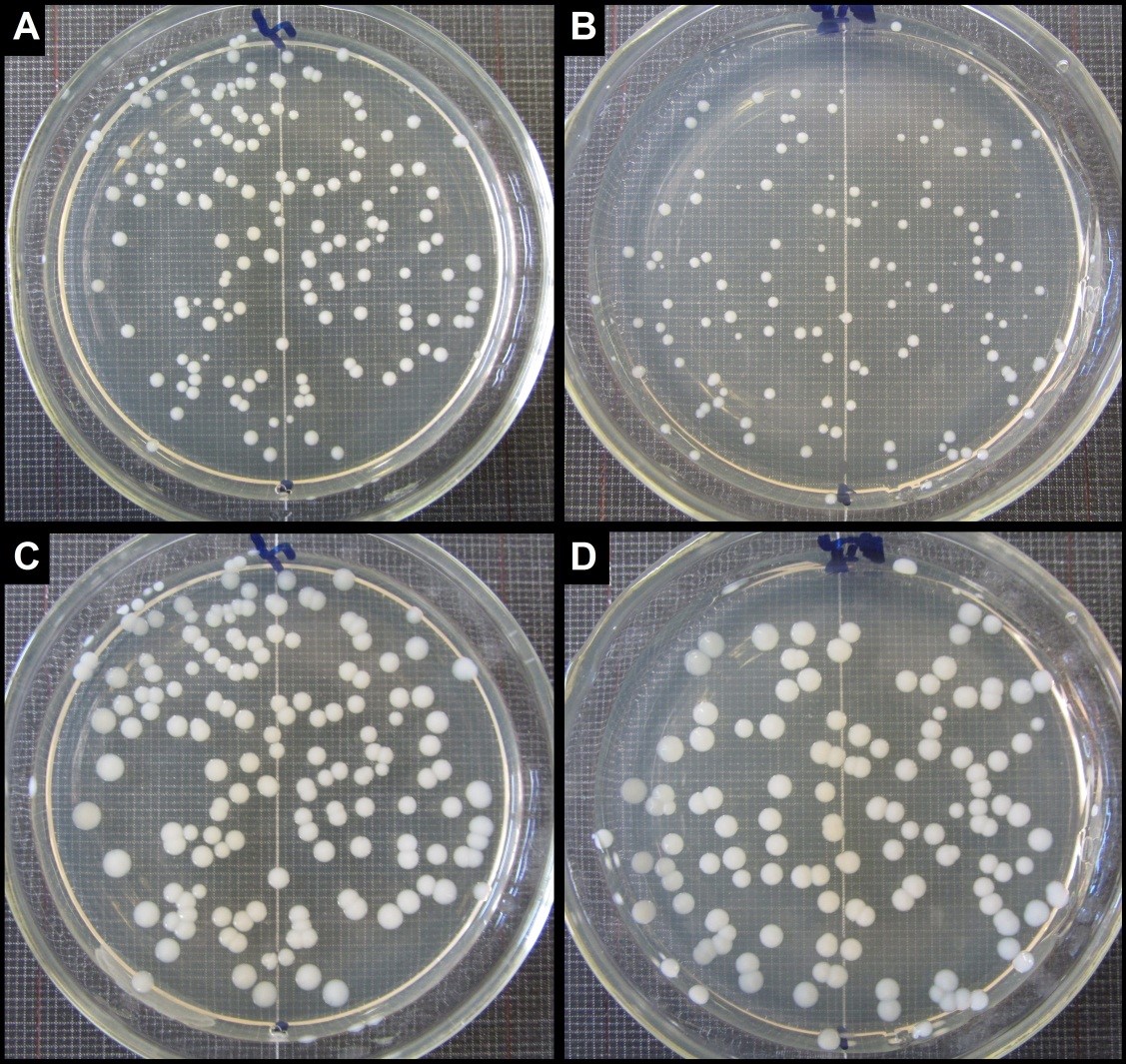Abstract
Antibiotic resistance is one of the greatest challenges to treat bacterial infections worldwide, leading to increase in medical expenses, prolonged hospital stay and increased mortality. The use of blue light has been suggested as an innovative alternative to overcome this problem. In this study we analyzed the antibacterial effect of blue light using low emission parameters on Staphylococcus aureus cultures. In vitro bacterial cultures were used in two experimental approaches. The first approach included single or fractionated blue light application provided by LED emitters (470 nm), with the following fluencies: 16.29, 27.16 and 54.32 J/cm2. For the second approach a power LED (470 nm) was used to deliver 54.32 J/cm2 fractionated in 3 applications. Our results demonstrated that bacterial cultures exposed to fractionated blue light radiation exhibited significantly smaller sizes colonies than the control group after 24 h incubation, however the affected bacteria were able to adapt and continue to proliferate after prolonged incubation time. We could conclude that the hypothetical clinical use of low fluencies of blue light as an antibacterial treatment is risky, since its action is not definitive and proves to be ineffective at least for the strain used in this study.
Keywords:
blue light; photobiomodulation; Staphylococcus aureus; in vitro study

 Thumbnail
Thumbnail
 Thumbnail
Thumbnail

